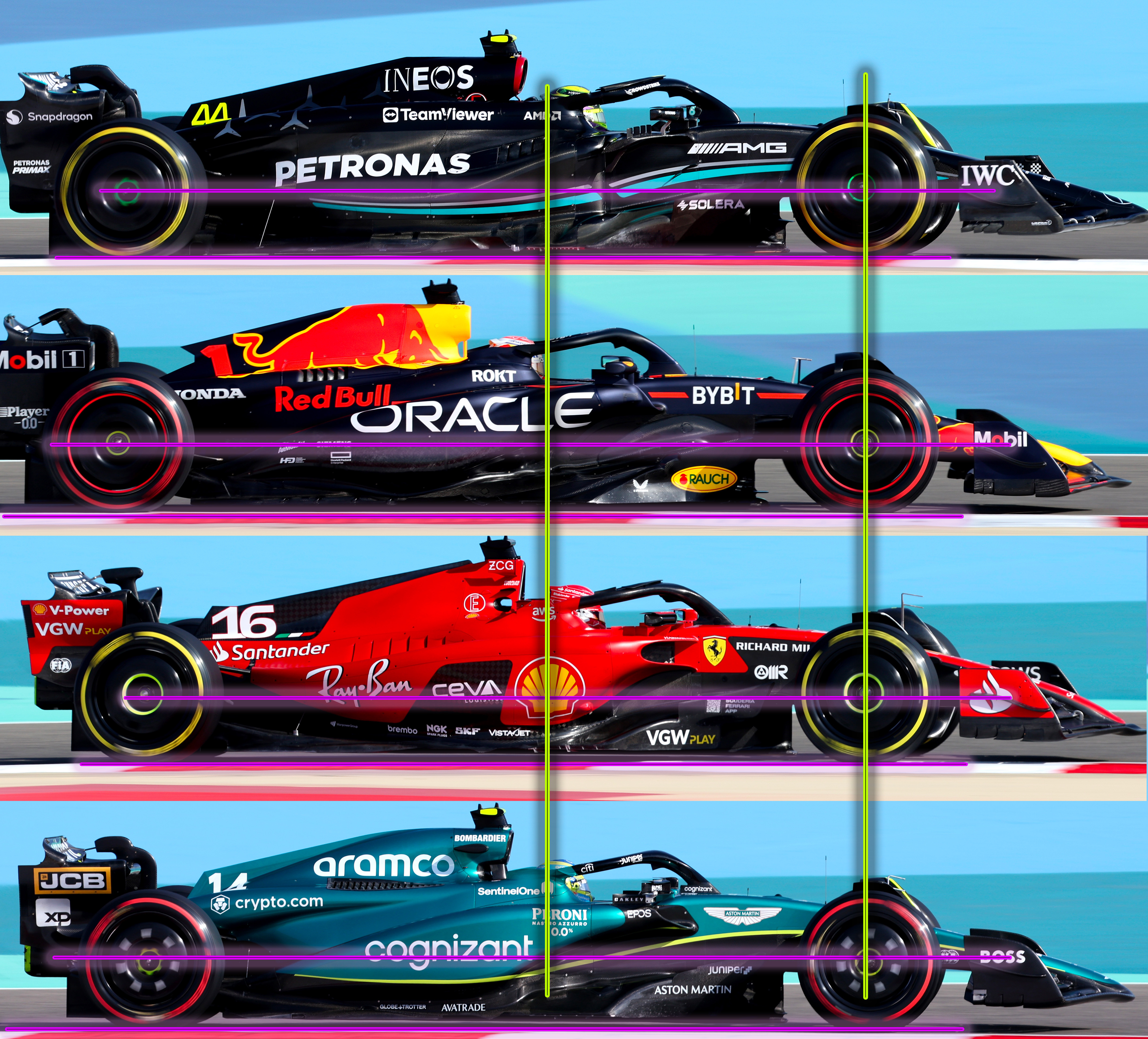In general, Hamilton calls the W14 a better race car than its predecessor because it no longer has bounce and has become more predictable. "It's easier to drive." And yet there is one circumstance that robs it of some of its natural driving feel. "Already last year the car was very strong on the front axle and weak in the rear for it. We've made the rear a little better, but not in the way we'd hoped."
-Ten centimeters of clearance
Hamilton puts it down to the seating position. In the Mercedes, the cockpit is five centimeters closer to the front axle than in any other car. That has to do with the idiosyncratic concept. To make the position of the side crash structure and sidepods legal, the cockpit has to move forward relative to the front axle.
The leeway is limited, however, because on the one hand the distance from the cockpit rear wall to the front bulkhead of the chassis must be a minimum distance, and on the other hand you must not conflict with the maximum wheelbase of 3,600 millimeters. "You have ten centimeters of space in which to move the cockpit back and forth," explains engineering director Mike Elliott.
Hamilton firmly believes that a cockpit in the normal position as it is on all pre-2022 Mercedes would give him a better feel for the rear end. "I have no problem with oversteering cars," the 38-year-old Englishman elaborates. "But with the cockpit position moved forward and the aerodynamic balance pushed forward, my perception of how the rear reacts has changed."
-No quick fix possible
Hamilton is now calling for Mercedes to return to the old architecture. Russell doesn't care. Tests have already been run in the simulator. In terms of lap times, the cockpit location had no effect, but Hamilton insists he feels better with the old size ratios.
However, he will have to wait until 2024 for that. Mercedes can't homologate a new chassis because of budget caps, and it would need one for such a fundamental change.
Translated with
www.DeepL.com/Translator
